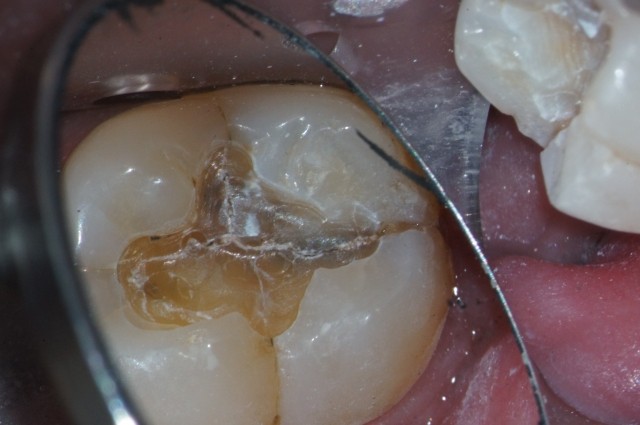5 Types of Tooth Fractures: The Silent Epidemic, Part II
In my last article, Solving the Silent Epidemic of Cracked Teeth, I reviewed the nature of and diagnosed cracked or fractured teeth. Now that you have seen or diagnosed a crack or fracture in a tooth, we need to be able to classify or determine the type of crack and its extent before we can manage it. In this article, I will discuss and help define the five different types of fractures/cracks in teeth.
Before we get to the five types of tooth fractures, let’s quickly look at a few facts about cracks. Tooth cracks are either termed “complete” or “incomplete” fractures. This describes whether one (incomplete) or both (complete) marginal ridges are involved with the crack. Fractures or cracks in teeth can be as simple as a craze line in the enamel to as complex as a root fracture in the middle or apical third. Also, sometimes we can meet patients with no symptoms, those with pain from biting, and constant pain associated with the cracked tooth.
Cracked Teeth Types
Now that we’ve covered that, here are the five types of cracks in teeth, according to the American Association of Endodontists1:
Craze lines: Craze lines are standard in many adult teeth and involve only enamel. They are often seen in unrestored teeth. Of course, it’s not always easy to determine the extent or depth of a craze line.
Fractured cusp: A fractured cusp is a complete or incomplete fracture initiated from the tooth’s crown and extended subgingivally, usually going both mesiodistally and buccolingually. The fracture usually involves two aspects of the cusp, crosses the marginal ridge, and extends down a buccal or lingual groove.
Cracked tooth: A cracked tooth is an incomplete fracture initiated from the crown and extends subgingivally and in a mesiodistal direction. It can go through one or both marginal ridges/proximal surfaces.
Split tooth: A split tooth is a complete fracture that starts in the tooth’s crown and extends subgingivally in a mesiodistal direction, usually through both marginal ridges and the proximal surfaces.
Vertical root fracture: A vertical root fracture is a complete or incomplete fracture from the root at any level and commonly runs buccolingually.
Finally, a less common and more recently described2 cracked-tooth type is called a “fracture necrosis.” It describes a tooth that is non-vital with little to no restoration present and highly suggestive of a fracture that extends from the occlusal surface into the pulp and progresses into the root surface. It is a specific type of vertical root fracture.
Now that you have clarity on the types of cracked teeth, this will lead us to the final part of this series: how to manage and treat the cracked tooth based on how it classified.
References
- Berman, L. H., & Kuttler, S. (2010). Fracture necrosis: diagnosis, prognosis assessment, and treatment recommendations. Journal of Endodontics, 36(3), 442-446.
- Rivera, E. M., & Walton, R. E. (2008). Cracking the cracked tooth code: detection and treatment of various longitudinal tooth fractures. American Association of Endodontists Colleagues for Excellence News Letter, 2, 1-19.
FOUNDATIONS MEMBERSHIP
New Dentist?
This Program Is Just for You!
Spear’s Foundations membership is specifically for dentists in their first 0–5 years of practice. For less than you charge for one crown, get a full year of training that applies to your daily work, including guidance from trusted faculty and support from a community of peers — all for only $599 a year.

By: Jeff Lineberry
Date: December 10, 2018
Featured Digest articles
Insights and advice from Spear Faculty and industry experts



